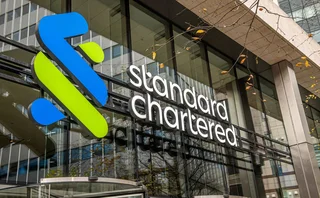
Too much power: Sefs warn on 'available to trade' rules
Final execution rules in the US have given swap execution facilities the power to determine what products they will be allowed to trade. The entire industry appears to agree this is a terrible idea – including the trading venues themselves. Peter Madigan reports

It is rare to hear regulated entities complain that a new rule gives them too much freedom, but since final rules for swap execution facilities (Sefs) were agreed on May 16, some of these venues – including Tradeweb – have been warning about the amount of latitude they have to decide which products fall into their market.
The Dodd-Frank Act states that an over-the-counter swap must be executed on a Sef or an exchange when it has been made available to trade (MAT) by one of the new platforms –
Only users who have a paid subscription or are part of a corporate subscription are able to print or copy content.
To access these options, along with all other subscription benefits, please contact info@risk.net or view our subscription options here: http://subscriptions.risk.net/subscribe
You are currently unable to print this content. Please contact info@risk.net to find out more.
You are currently unable to copy this content. Please contact info@risk.net to find out more.
Copyright Infopro Digital Limited. All rights reserved.
As outlined in our terms and conditions, https://www.infopro-digital.com/terms-and-conditions/subscriptions/ (point 2.4), printing is limited to a single copy.
If you would like to purchase additional rights please email info@risk.net
Copyright Infopro Digital Limited. All rights reserved.
You may share this content using our article tools. As outlined in our terms and conditions, https://www.infopro-digital.com/terms-and-conditions/subscriptions/ (clause 2.4), an Authorised User may only make one copy of the materials for their own personal use. You must also comply with the restrictions in clause 2.5.
If you would like to purchase additional rights please email info@risk.net
More on Markets
EC official ‘positive’ on launching NBFI repo facility
Isda AGM: EU may follow UK with contingent liquidity facility for periods of market stress
Built for stress: rethinking liquidity management in a new era of risk
Funding liquidity strategies must evolve to thrive in a climate defined by volatility, regulatory pressure and rising depositor stress
US exchanges fight SEC fee caps in court
Cboe and Nasdaq expected to defend rebates that critics say impede market efficiency
Eyes on automation as FX options volumes surge
Dealers and trading platforms are making gradual progress to electronify foreign exchange options pricing and workflows
Standard Chartered taps Newman to head rates and FX trading
UBS veteran becomes latest fixed income trading exec to leave Swiss bank
FSB exec says reduction of NBFI leverage not a target
Isda AGM: Martin Moloney says the body isn’t seeking wholesale cut in leverage across markets
APG upbeat on sustainability derivatives despite setbacks
Isda AGM: Dutch pension fund manager’s chief executive believes instruments have room to grow
Isda proposes oversight group for CDS process
New governance committee the “first step” in credit determinations revamp







